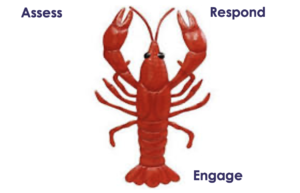Stress is our response to external conditions. We become ‘stressed out’ when what is asked of us exceeds our perceived skill level, experience or time capacity. The depth of stress is based on our assessment of the situation at hand. Those that have experienced any type of work place trauma or personal trauma may be more susceptible to stress. This may be due to the fact that the ability to reality test a station has been hindered because of this trauma. It may feel like everything is a threat and stress ensues.
Extended durations of stress can lead to burnout. Burnout is caused by a lack of perceived control of our current work load or a lack of choice. It can be caused by extended periods of isolation and a lack of role clarity. Ongoing relational strain can create burnout too. Remember that these causes start as stressors and then extend to burnout. Burnout is an actual diagnosis.
The symptoms of burnout are emotional exhaustion, cynicism and lack of professional effectiveness.
What is the leader’s responsibility with stress?
1.) Know Your Stress Default Response Mode: When stressed how do you manage it? Who or what triggers a stress responses?
2.) Know Your Stress Mitigation Tools: Everyone deals with stress differently. What matters is the word ‘deal’ – ensure that you are dealing with stress in a way that is supportive. Supportive stress mitigation approaches include – exercise, diet, sleep, positive relationships and mindfulness (be present).
3.) Lead Your Team: Ask your team members to offer up a Stress Level Score – “On a 1-5 scale, 1 being on the beach in Cancun and 5 admitted to the hospital, where would you score yourself?” Share your score too and ask them how they manage their own stress level.
4.) Use A.R.E – This acronym can be useful as long as you are mindful of what is happening. When a potentially stressful situation occurs, start with Assess. Assessment is a non-judgmental observance of what is happening. Respond by either writing down what happened or calling it out verbally. Engage is about moving forward into the current moment with intention. We remember concepts with images – perhaps the Lobster below will help you remember!

